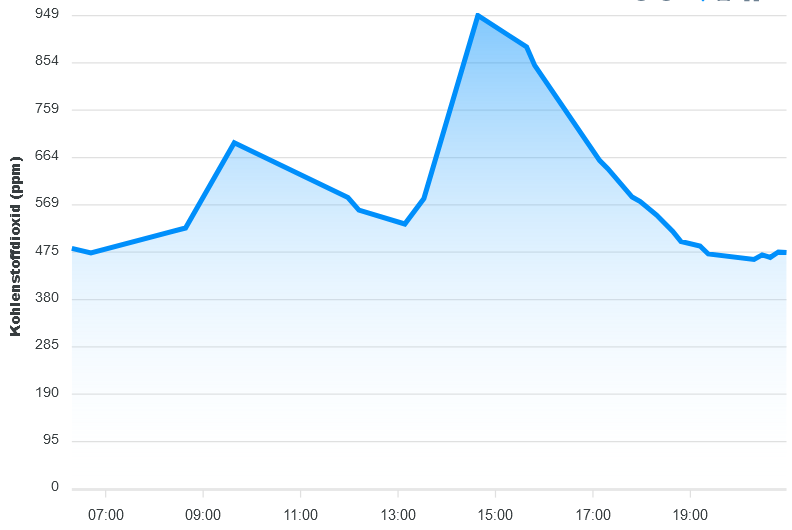Rapperswil-Jona starts Smart City expansion with temperature, humidity and CO2 sensors
With the ax-track smart city platform, a wide variety of measurement sensors can be managed in a centralised system. The GPS positions of municipal vehicles, the air quality in the Bollwies school building and the level of the city stream can all be viewed on a map, both on the computer in the office and on the go on a smartphone or tablet.

The city of Rapperswil - Jona has implemented its first smart city projects with the companies CRA Mess-, Regel- + Antriebstechnik AG and adnexo GmbH. These projects should help to significantly improve the economic sustainability of the town of Rapperswil Jona. In future, recurring tasks will be automated using sensor technology in order to be prepared for future growth. This means maintaining the existing level of quality on the one hand and utilising existing resources more efficiently on the other. The collaboration between the three parties works flawlessly, with fast implementation and innovative thinking.
Rapperswil-Jona is endeavouring to take off into the future as a more efficient city with technological progress and an improved ecological footprint. The projects are aimed at this development concept with innovations.


The curve shows the time at which the ppm values are increased. There is a clear drop at lunchtime and towards the end of the school day.
Temperature, humidity and CO2 sensors in the Bollwies school building
Project overview
During the COVID-19 pandemic, the Bollwies school has equipped its classrooms with sensors for temperature, humidity and CO2. This environmental data is not only extremely important during a pandemic. Good indoor air quality has a positive effect on health and performance. Indoor air measurement is therefore an important component for a better learning environment. Correct ventilation is particularly important in classrooms. The measurements show that the air quality changes quickly, depending on breaks, class changes and teaching methods. A CO2 level of over 1,000 ppm is already considered insufficient.
”An optimal indoor climate contributes to well-being, influences concentration and reduces the risk of bacteria and virus transmission”.
The solution
Temperature, humidity and CO2 sensors enable specific measurements per classroom and individual adjustments of the ventilation by teachers. The real-time CO2 value can be tracked via the ax-track app, which promotes mental relief during pandemics and flu seasons. The measurement of humidity and the adapted ventilation enable efficient heating control, which reduces heating costs. Thanks to our IoT platform ax-track, teachers can easily monitor the measurements in the app and act immediately with alarm notifications. Automated reporting also makes it possible to obtain analyses over a period of time and thus achieve long-term improvements.

The blue line shows the outside temperature, the green line the temperature in the classroom. Ideally, the heating would therefore only run at night, as the people in the interior heat the temperature to over 28 degrees Celsius.
Outlook for the future
In future, the aim is to equip public buildings with temperature, humidity and CO2 sensors in order to reduce heating costs and improve the well-being of users. With ax-track, data on all buildings can be collected centrally, which simplifies data processing and supports the recommendations of the Federal Office of Public Health. Close co-operation between building owners and authorities is always recommended.
